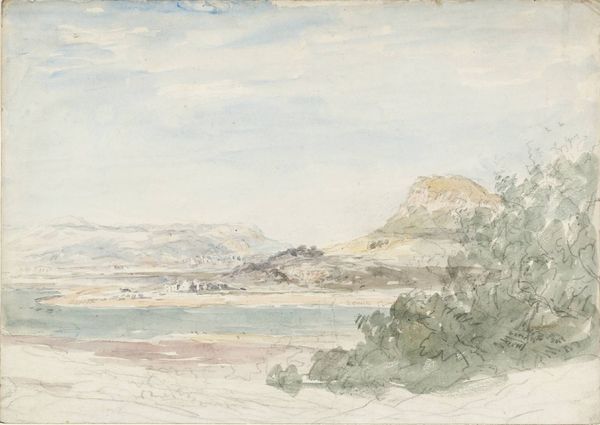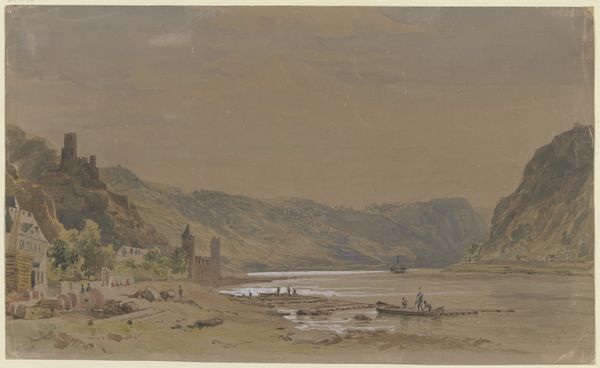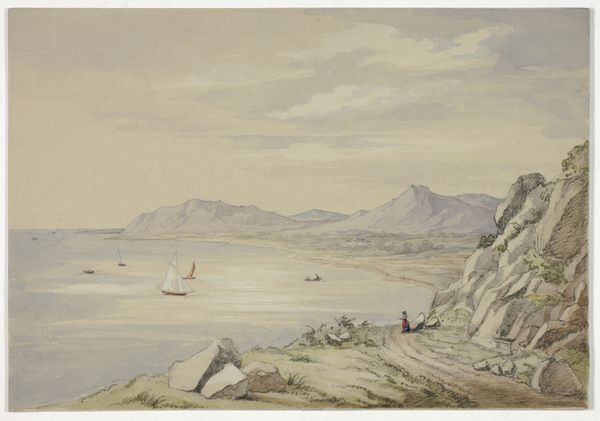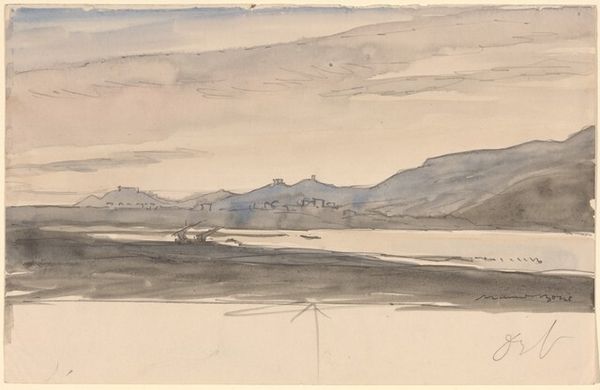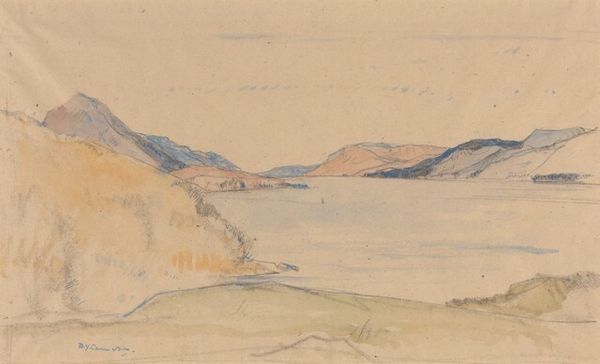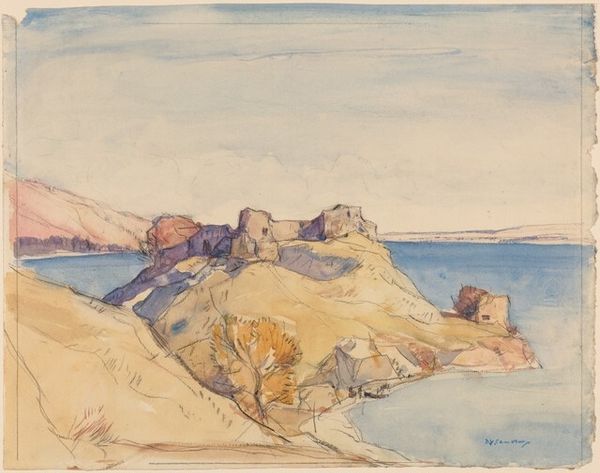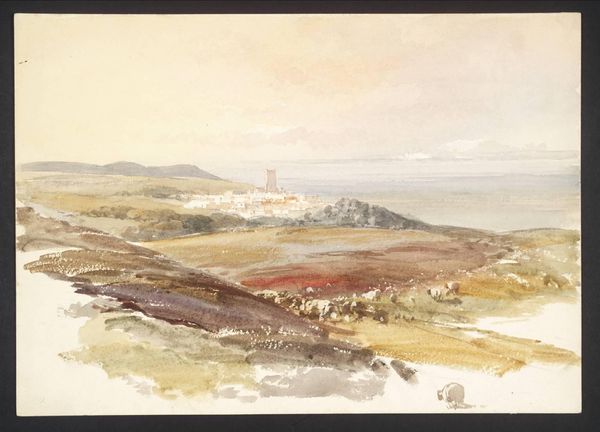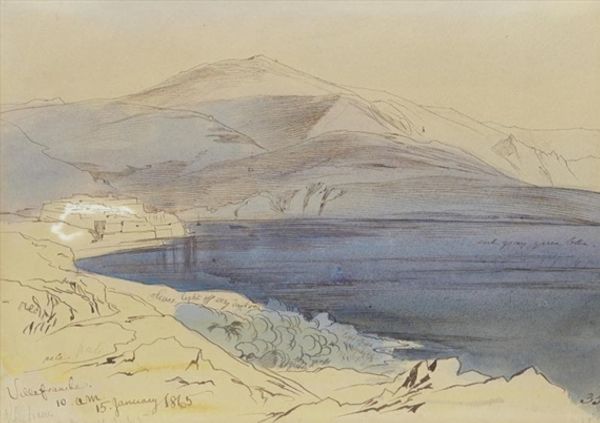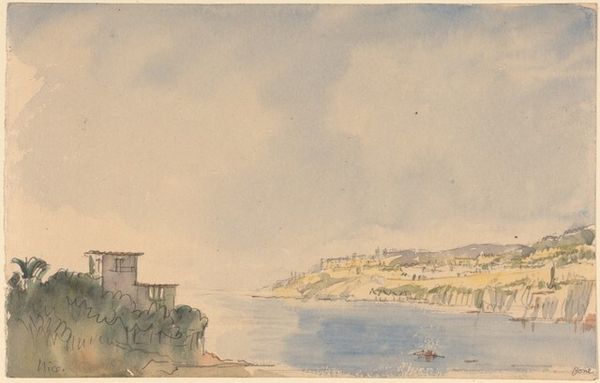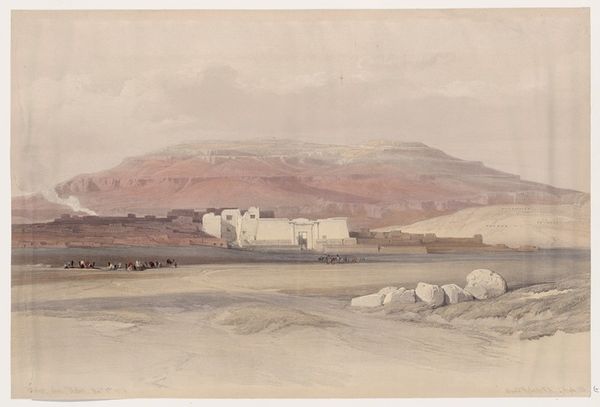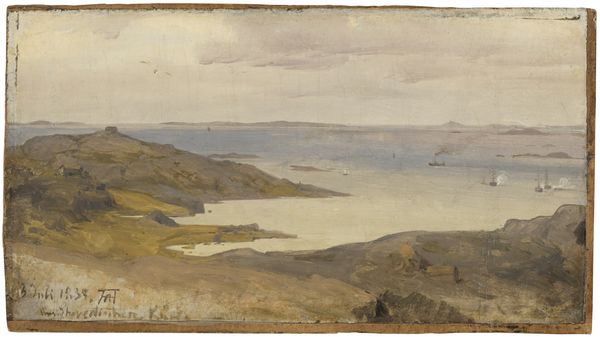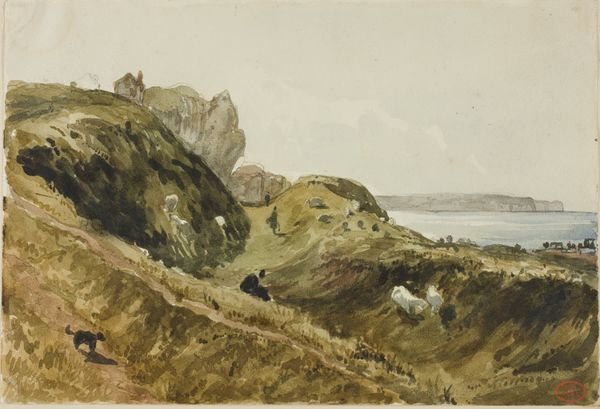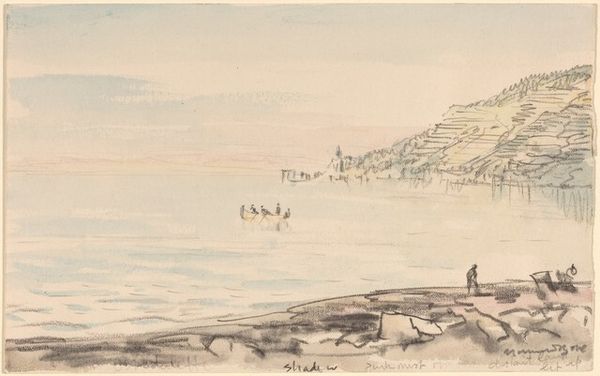
plein-air, watercolor
#
plein-air
#
landscape
#
watercolor
#
romanticism
#
watercolor
Dimensions: height 179 mm, width 282 mm
Copyright: Rijks Museum: Open Domain
Curator: Immediately, the subtle color palette gives me a sense of solitude. What do you see? Editor: That is a very calming observation! Well, let's consider Charles Rochussen’s "Gezicht op het Loch Linnhe bij Fort William, Schotland", dating from 1848. It is currently held in the Rijksmuseum’s collection, and, at first glance, the almost muted tones suggest something beyond simple landscape depiction. Curator: Absolutely! Beyond depicting just scenery, it evokes the idea of transience and the human relationship with vastness. Think of the tiny, seemingly hastily sketched figures near the shore; these resonate with the Romantic era’s embrace of the sublime and the powerful insignificance of people before untamed nature. Editor: Yes! That idea also resonates with colonial attitudes and politics as well. Remember, the Highlands were a contested space after the Jacobite uprisings. The seeming ‘emptiness’ of the landscape conveniently ignores complex social and political histories of land use and ownership. Even Romanticism was always a bit of an exclusive enterprise for the elite classes. Curator: Good point. I see how Rochussen's visual choices reinforce a certain narrative, the pictorial shorthand. The loose watercolor strokes contribute to this sense, almost erasing precise detail to emphasize instead mood, similar to a distant, almost dreamlike memory. Editor: I see it. The choice to use plein-air techniques adds to this reading, and could have been useful to produce these images quickly while abroad. The scene becomes less about Scotland itself, and more about the experience, which certainly does feel fleeting and idyllic, despite its place within a complex power system of colonialism and class. Curator: So, the artist is tapping into symbols tied to exploration, privilege, even control of what can be romanticized versus erased in history. Editor: Precisely. Rochussen hands us a scene tinged with those implications. Next time, I might pause and ponder, beyond the scenery: who does this silence really benefit? Curator: Agreed. Seeing it this way invites a far more textured, challenging discussion about these places, their histories, and those left behind.
Comments
No comments
Be the first to comment and join the conversation on the ultimate creative platform.
